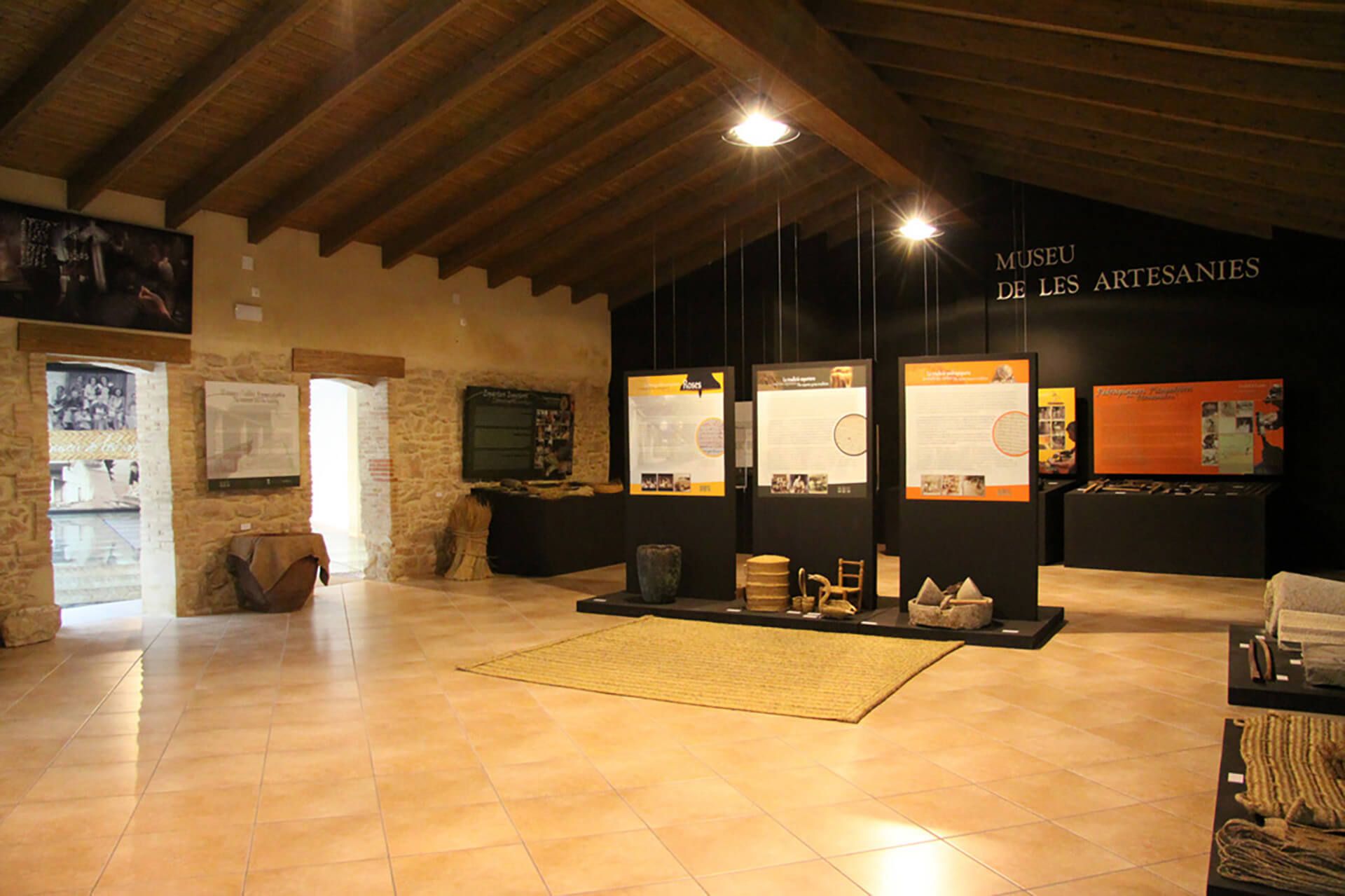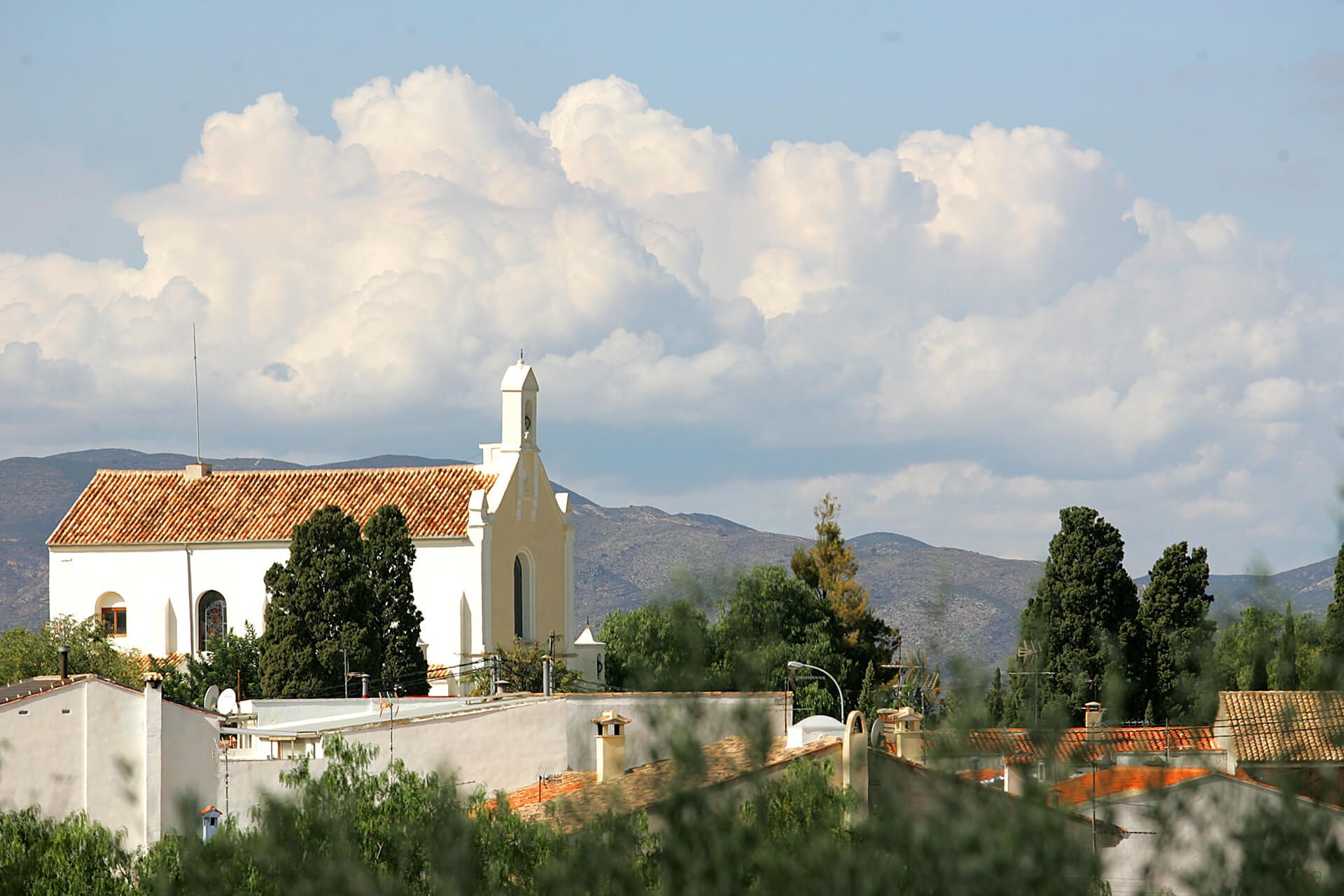Atzeneta D´Albaida
As stated in the book “El Mirador del Valle. Patrimonio historico-artístico y tradición artesanal de Atzeneta d’Albaida”, published by Atzeneta Council in 2002, the unique pictorial beauty of this town, known among the people of the administrative region as “the Valley Viewpoint”, is due fundamentally to the conjunction of two landscape features. One is the limestone mountains, full of pine trees, which has provided water and stone, snow and wood, grass and honey, to the inhabitants of the Marquisate of Albaida: the Sierra de Atzeneta range. The other scenic and heritage element is the village itself, together with its people.
Gastronomy:
The base of the local cuisine is rice, including dishes such as paella, “cassola al forn” (baked rice casserole) and “arroz caldoso” (rice with broth). Typical local sweets include “monas”, “fogasses”, “fabiola”, and “los platanets” (small banana-shaped biscuits).
Places of interest:
Church of Saint John the Baptist
Built between 1719 and 1728 to replace an old, 15th century Moorish church, it is located in Calle de las Almas on the site of a former mosque. Both the old and the new temple were built in honour of Saint John the Baptist, one of the prophets that the Qur’an considers predecessors of Muhammad. Furthermore, in al-Andalus it was common to celebrate the traditional Roman festivity of the summer solstice on 24 June. The church has a single nave, without transept, eight chapels without buttresses and a rectangular presbytery decorated with numerous stucco-based baroque motifs, rococo painting, capitals and entablature.
“Nevera de Dalt” and “Nevera de Baix”
Cylindrical stone buildings, covered with a dome; their purpose was the storage of snow in winter for different uses.
The Hermitage of the Holy Christ of Faith and the Calvary Hill (19th century)
The building is very dear to the people of Atzeneta. The calvary is also the setting for the traditional carrying of the statue of Christ to the church, an act that takes place during the village’s main festivities. The Christ of Atzeneta is popularly called ‘el Morenet’. Popular tradition has it that this is because it was rescued unharmed from a fire, where it had been thrown by the French on New Years Eve of 1812. The wood of the statue, however, remained a darkened tone.
Public Lavoir and Slaughterhouse (20th century)
The former slaughterhouse has two pens, a large skinning room, a bench for butchering animals, a sink and a drain that empties into the “Fuente” irrigation canal. This canal was fed by the “Fuente de Atzeneta” spring. Before it reached the local agricultural land, it brought running water to the public lavoir. It had two separate wash pools: one for the clothing of healthy people, and one for clothes of sick or quarantined people. This division, however, was usually only applied in times of epidemics or contagious diseases. It was also used for the washing of extremely dirty items, thus avoiding inconvenience to those washing their clothes in the other pool.
PR-CV 222: Senda alt del Benicadell (11.1km 4h).
– Other excursions:
The Water route: to the source of the “Acequia del Port” irrigation canal.
The walking tour of “Acequia del Port”.
To “l’altet del Pare Sant”.
To “la serreta dels Pins i de la Creu”.
To “El Mirambé”.
To the springs: “Freda”, “l’Arrier”, “l’Anohueret”, “Meler”, “l’Ordenari”.
To “El corral de Diego y Penalba”.
Furthermore, in Atzeneta d’Albaida there are still craftsmen dedicated to working with esparto, a long-standing activity in the village.
Festivities:
The village’s main festivities take place between 22nd and 24th September, in honour of the Christ of Faith, Our Lady of the Rosary and Saint Roche. They are accompanied by religious and recreational activities, including a fancy-dress dance and a paella competition, as well as processions, parades, etc.
- In January, Saint Anthony the Abbott.
- In September, the Moors and Christians festivities are held (second weekend of September), as well as the festivity dedicated to the Christ of Faith, the Our Lady of the Rosary and Saint Roche (third weekend of September).





